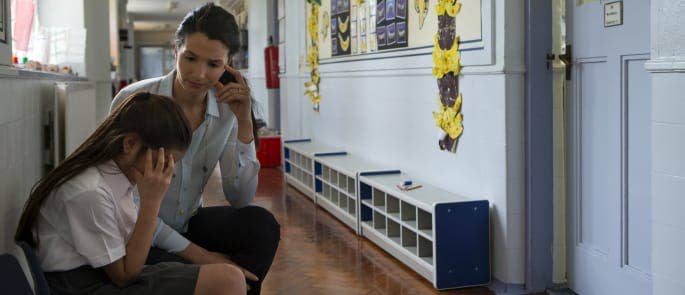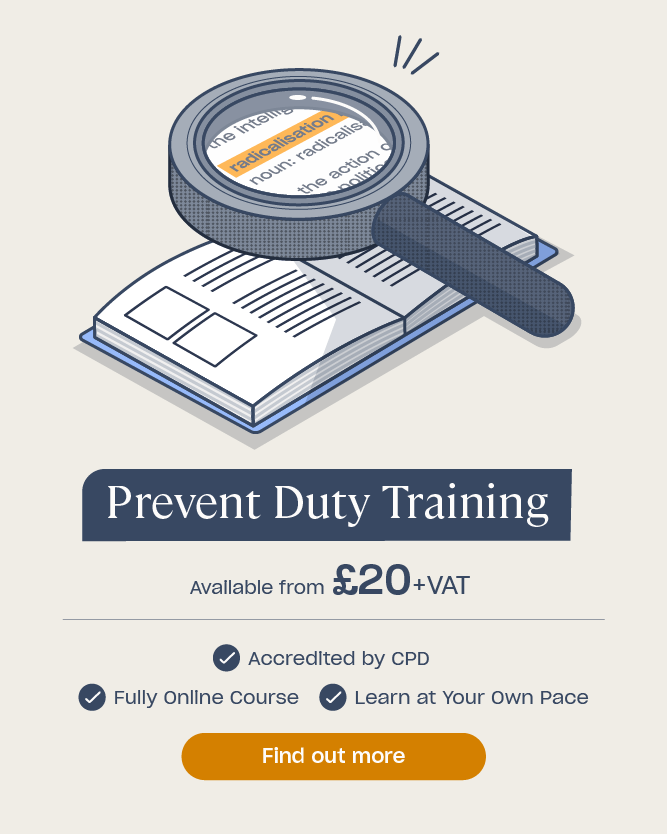The Prevent Strategy: Practical Tips for Managing Controversial Topics in the Classroom
Controversial Topics: A Guide for Teachers
This guide has been designed with teachers in mind to help you navigate sensitive or potentially controversial topics in the classroom.
Issues like immigration, terrorism, war, religion and extremism, race and racism, and sexism are big in the news. Discussing sensitive issues and providing age-appropriate learning opportunities around these issues helps prepare students for democratic participation in later life.
Debate-style activities can be used successfully in all areas of the curriculum, but you are perhaps more likely to include them in regards to more sensitive concepts and issues, within PSHE, relationship, sex and health education, citizenship, and religious studies.
Structured classroom debate provides students with the ability to:
- Debate their beliefs.
- Practice and develop reason.
- Make cognitive gains in decision making.
- Challenge their views and the views of others.
- Recognise, unpack, and explain subtext.
- Take a step back and develop objectivity.
- Acknowledge and explain the reasons why other people hold their views.
These are skills that children need – and they also help promote British values which is part of the Prevent duty within the education sector.

Tips for Teachers
Whether you’re new to teaching or a seasoned veteran, it’s important to have a toolbox of tips for successfully navigating discussion of sensitive issues. Here are our six favourites:
1. Establish Ground Rules.
In the classroom, you need to establish ground rules and create an atmosphere of respect and tolerance. It is important that you discuss these beforehand, ideally co-construct them with the students, and refresh everyone’s memory of them at the start of sessions. Remember – by modelling the ground rules, and the way you expect students to conduct themselves in such discussions, you are also providing a powerful learning opportunity
Such ground rules may include:
- Not permitting personal attacks.
- Maintaining a zero-tolerance policy on intolerance like homophobia and Islamophobia.
- Asking students to be open to and examine their own subtext.
- Asking students to remain open to multiple perspectives.
Never show surprise at what some people believe. Everyone is different. Overcoming intolerant beliefs can be hard because these thoughts and opinions are often deeply embedded.
2. Never Ignore Intolerant Remarks.
Never leave remarks unchallenged or unexplored. If you ignore something hateful, this teaches students that intolerance and trivialising are okay. Worse, it makes some students feel like they aren’t protected in the classroom. When someone makes a comment that is hurtful, upsetting or intolerant, it’s a good idea to discuss it calmly and try to consider why some people might feel this way. However, you need to balance exploring the comment with making sure the student who said it doesn’t feel isolated or attacked! If you can do this, you can turn a heated moment into an opportunity for deeper learning and development.
And remember, all your students should be protected in the classroom, no matter who they are or what they’re saying.

3. Know When to Talk Outside The Classroom
Supporting students who’ve had a difficult time in class can help them learn from their experience and feel supported. You may need to support people whom you don’t agree with as well. It’s just as important to speak to the student who got upset as it is to speak to the student who made the remark or held the belief.
Of course, if something mentioned in the activity strikes you as a potential safeguarding concern, you should follow the established procedures for reporting that.
Part of your Prevent duty responsibilities is to notice signs of radicalisation. If, during such activities, you become concerned that a student might be exposed to, or supporting, extremist ideologies, you need to respond to these concerns. Recalling your Prevent training, the next step after noticing a concern, would be to check that concern by speak to a colleague, your Designated Safeguarding Lead, and the student themselves.

4. Recognise when students are distressed.
Sometimes you may have to guess what’s upsetting a student who’s showing visible signs of distress. Without mentioning who in the room is being affected, it can be a good idea to introduce other perspectives if the conversation begins to get one-sided.
5. Respect that some students might want to remain silent.
Some issues are uncomfortable for some people. They might be worried about the views of their peers, or they could worry that hateful language and generalisations might be directed at them. If they choose to remain silent be sure to respect this.

6. Make use of The Five Minute Rule.
The Five Minute Rule is an activity that allows students to explore marginalised, invisible or controversial views by trying to get into the mindset of a person who holds that view for five minutes.
Students can ask for this exercise to be used or you can implement it at any time. The Five Minute Rule requires you to set a timer for five minutes. During this time, the group must refrain from criticising the perspective in question and try to get into the mindset of someone who believes it.
You can prompt students using the following questions:
- What’s interesting or helpful about this view?
- What are some intriguing features of this viewpoint?
- What would be different if you believed this perspective?
- Under what conditions might this idea seem truthful? Think social, cultural, economic conditions, etc.
Need a Course?
Our Prevent Duty Training gives you a clear and concise overview of the Prevent duty, with opportunities to apply your learning to case studies and scenarios. It also contains Choose Your Path content so that you can access the information that is most relevant to your role.
Managing Difficult Conversations in the Classroom
If, during these activities, emotions seem to run high, or students become upset or angry, these results can still form part of their learning experience. Emotive responses lead to the recognition that debates on social issues should be handled with care, sensitivity and respect. It also teaches students to try remain objective, and that not everyone will agree with them – coming to terms with this is vital!
Exploring these tensions in a carefully managed and structured way is essential.

Ask students to leave emotions and beliefs at the door.
This isn’t always possible.
But you need to remember that no one makes a controversial comment without reasoning. Try to get students to adopt this attitude because it’s much better to explore the thoughts, experiences, and conditioning behind a comment. Equally, trying to approach topics on an abstract level allows students to take a step away from themselves and consider the perspectives of others.
However, abstract reasoning doesn’t mean that students should say insensitive, cold, cruel or unkind remarks – make this clear. Thinking in abstract terms is useful to allow students to perspective take and remain removed from themselves, not from others.

Help students explore subtext.
Subtext refers to the ideas or hidden meanings underneath communication. Sometimes subtext expresses hidden meanings that are purposefully ambiguous – this device is often employed when expressing controversial ideas but not wanting to be pinned down for a controversial view. Body language, tone, and intonation are also a part of subtext.
Sometimes, the subtext is visible to others but invisible to the person who said it. In these cases, it may be that the speaker isn’t aware of the impact of their words.
A common feature of controversial topics and social issues is that, for the people whom the issue does not apply to, they are unaware of the impact of their words and the hidden message within them. Someone who is unaware of their prejudices won’t consider themselves racist, sexist, homophobic, etc. and it’s possible that they won’t understand the subtle impact of the language they’re using.
Being able to understand AND explain subtext in a clear way is a huge asset for students in their future relationships and in the world of business.

Keeping Your Head
Recognise your biases. Everyone has biases; recognise what yours are, how they could be offensive and remain neutral.
Breathe. Monitor yourself if you know that the subject is something you feel strongly about.
Be a role model. Handle controversy how you want your students to because they’ll look to you for guidance.
Keep some distance. Don’t get involved in the debate. Your role is to facilitate students learning, to guide students, to introduce new arguments, and to remind students of the ground rules.
Prepare. If the issues that might come up are areas that you don’t know a lot about, do your research. Is it an area with many misconceptions? Come armed with facts and statistics.
Be proactive. Stop the discussion if you need to and interrupt politely to provide guidance and structure if the conversation stops being useful.
Further Resources
- Test Your Prevent Knowledge
- Prevent Duty Training
- Fundamental British Values Ideas for Teachers
- Prevent Duty Guidance for Teachers: Free Resource Pack
- A Guide to Emojis and Texting Abbreviations
- How to Tackle Incel Culture in Schools
- Prevent Duty Training: What Do I Need to Know?











